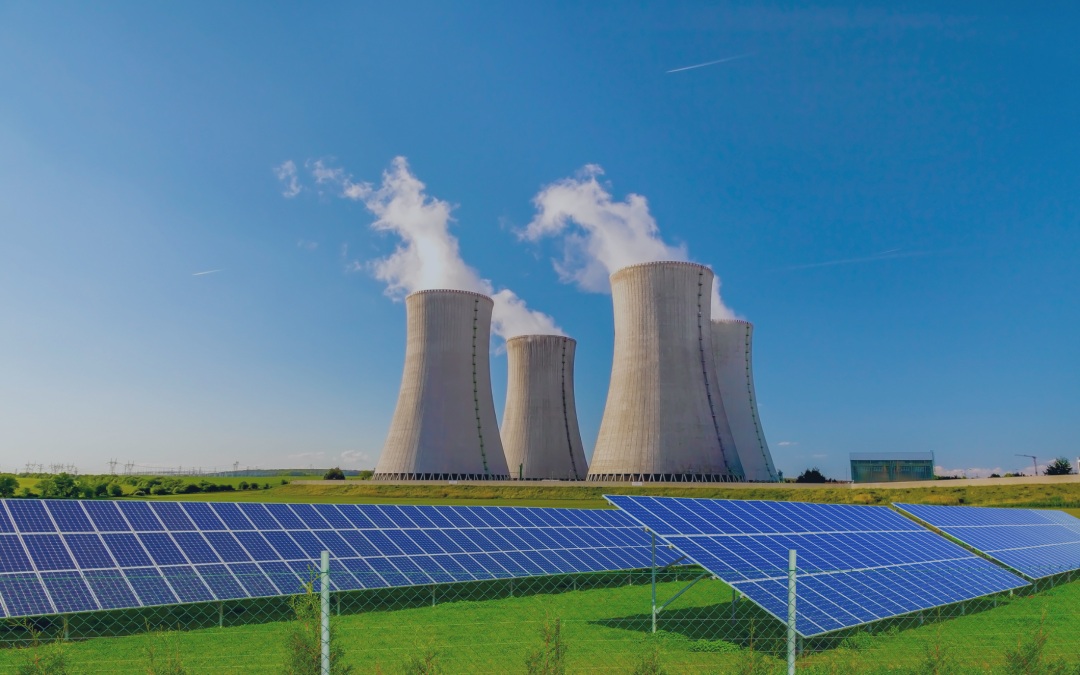
by Amy | Oct 17, 2024 | Stock Insight
As cities continue to grow and the adoption of artificial intelligence (AI) accelerates, energy consumption is reaching unprecedented levels, placing significant pressure on existing infrastructure. Addressing these growing demands requires substantial investment in modern, resilient energy systems that blend traditional energy sources—such as oil, gas, and nuclear—with newer, cleaner technologies like renewables. This transition presents valuable opportunities for companies that provide the essential services and infrastructure needed to support large-scale projects.

At TAMIM Asset Management, Robert Swift, Portfolio Manager of the Global High Conviction Portfolio, emphasises a “picks and shovels” approach to investing. This strategy focuses on companies that supply the critical tools and technologies needed to support the energy transition and infrastructure development, rather than directly investing in speculative high-growth sectors. With countries like Japan revitalising nuclear energy as a stable base load power source and regions balancing renewable energy with traditional fuels, this investment approach becomes even more pertinent. Below, we explore three long held investments -Emcor Group, MDU Resources, and Hitachi Ltd.—that align with Robert Swift’s philosophy and are well-positioned to capitalise on global infrastructure demands.
Emcor Group: A Leader in Critical Energy Services
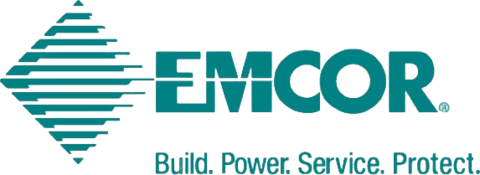 Emcor Group (NYSE: EME), a leading provider of electrical and mechanical construction services in the United States, plays a crucial role in designing, building, and maintaining essential energy systems for urban centres and industrial facilities. The company’s services span HVAC, electrical systems, and power generation, which are crucial for supporting cities and industries, including the AI-driven data centres that require modern power infrastructure to operate efficiently.
Emcor Group (NYSE: EME), a leading provider of electrical and mechanical construction services in the United States, plays a crucial role in designing, building, and maintaining essential energy systems for urban centres and industrial facilities. The company’s services span HVAC, electrical systems, and power generation, which are crucial for supporting cities and industries, including the AI-driven data centres that require modern power infrastructure to operate efficiently.
Emcor’s business model is balanced and adaptable, enabling the company to thrive across various high-growth sectors, such as data centres, semiconductor manufacturing, and healthcare. This versatility positions Emcor as a significant player in the transition to energy-efficient infrastructure. The company is not just focused on new energy projects; it is also involved in the modernisation of existing grids to improve energy efficiency and reliability.
Recent financial results illustrate Emcor’s strength. In Q2 2024, the company reported $3.7 billion in revenue, with a project backlog of $9 billion, reflecting its strong pipeline of future work. A key factor in Emcor’s success is its commitment to advanced technologies like Virtual Design and Construction (VDC) and prefabrication, which enhance project execution and align with industry trends of integrating digital solutions into construction and energy services. These technologies allow Emcor to streamline operations, reduce costs, and complete projects more efficiently, giving it a competitive edge in the industry.
Emcor’s focus on critical infrastructure services and its strong positioning in high-demand sectors make it a compelling choice that benefits from the broader energy transition.
MDU Resources: Supporting America’s Energy Infrastructure
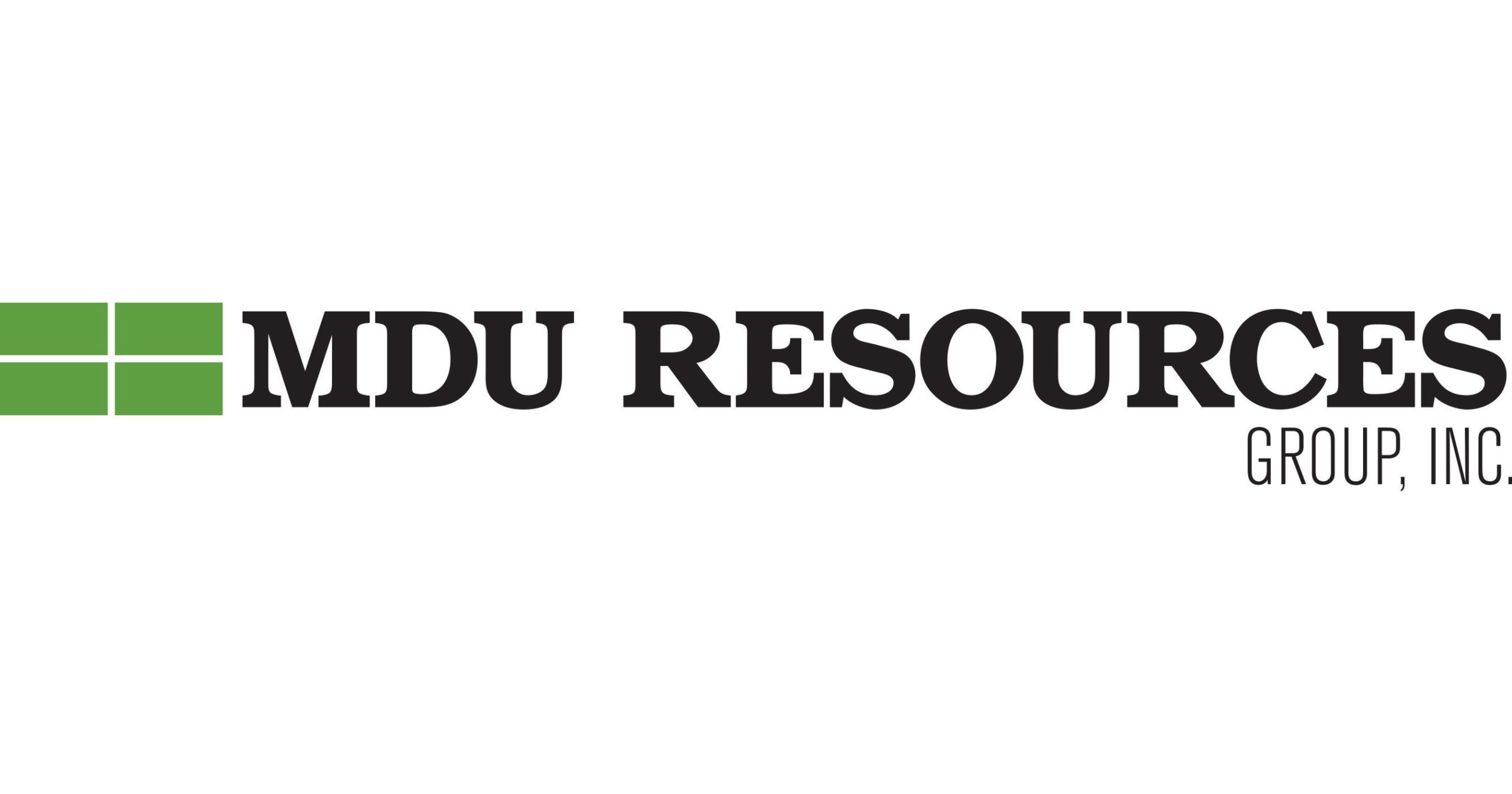
MDU Resources Group (NYSE: MDU), is a diversified energy and construction services provider that plays a central role in the development of America’s energy infrastructure. The company focuses on regulated energy delivery, including electricity and natural gas, which provides stable, predictable cash flows. This focus positions MDU well to meet the needs of expanding urban areas and the increasing demand for efficient energy systems.
MDU’s strategy is to become a pure-play regulated energy delivery company, with steady growth supported by its utility operations. As of mid-2024, MDU serves 1.2 million utility customers and operates over 30,400 miles of transmission lines across several states. Its pipeline operations, with a daily capacity of 2.8 billion cubic feet, play a vital role in meeting natural gas demands, especially in significant energy markets like the Bakken region, known for its oil and gas production.
The company’s performance in Q2 2024 showed the Pipeline segment achieving growth of 99%. The company also announced the completion of the Heskett IV, 88-megawatt simple-cycle combustion natural gas turbine project. This project exemplifies MDU’s commitment to modernising its energy delivery capabilities while expanding capacity. The company’s long-term $2.8 billion capital investment plan aims to enhance and upgrade infrastructure, focusing on sustainable growth while maintaining a robust balance sheet.
Additionally, MDU is well-positioned to benefit from the U.S. Infrastructure Investment & Jobs Act (IIJA), which allocates significant funding to modernise the country’s infrastructure, including energy systems. MDU’s involvement in large-scale projects funded by this initiative is expected to drive further growth as the nation prioritises energy reliability and modernisation. MDU represents a strong option that balances traditional energy needs with forward-looking growth strategies.
Hitachi Ltd.: Bridging Traditional and Future Energy Needs
 Hitachi Ltd. (TYO: 6501), a Japanese multinational conglomerate, plays a pivotal role in the global shift toward sustainable energy and digital transformation. The company’s expertise extends across power grids, nuclear energy, and advanced industrial systems, which positions it well to support the modernisation of energy infrastructure worldwide. Hitachi’s broad involvement in energy projects ranges from renewable energy solutions to digital tools that optimise energy management, making it a key contributor to the evolving energy landscape.
Hitachi Ltd. (TYO: 6501), a Japanese multinational conglomerate, plays a pivotal role in the global shift toward sustainable energy and digital transformation. The company’s expertise extends across power grids, nuclear energy, and advanced industrial systems, which positions it well to support the modernisation of energy infrastructure worldwide. Hitachi’s broad involvement in energy projects ranges from renewable energy solutions to digital tools that optimise energy management, making it a key contributor to the evolving energy landscape.
Hitachi’s financial results for Q1 FY2024 showed strong revenue growth, driven by Green Energy & Mobility division and Digital Systems & Services segments. A significant portion of this growth is attributed to Hitachi Energy, which focuses on large-scale infrastructure projects like high-voltage direct current (HVDC) systems for integrating offshore wind energy into power grids, as well as nuclear power solutions for stabilising energy supply and meeting clean energy targets.
The company’s work in nuclear energy has gained renewed interest, both in Japan and internationally, with a dramatic revenue increase in this segment over the past year. This growth reflects the resurgence of nuclear power as a dependable base load energy source, especially in countries looking to reduce carbon emissions while maintaining energy stability. Hitachi’s involvement in projects like advanced nuclear reactors and supporting the safe decommissioning of older facilities showcases its comprehensive approach to nuclear energy solutions.
A key factor in Hitachi’s success is its digital platform, Lumada, which integrates AI and the Internet of Things (IoT) to optimise energy management. This platform allows for real-time monitoring and predictive maintenance of energy systems, helping clients reduce operational costs and improve energy efficiency. By bridging the gap between traditional energy solutions and cutting-edge digital technology, Hitachi offers investors exposure to both reliable infrastructure and the next wave of technological innovation.
The TAMIM Takeaway
As urban growth continues and energy demands increase, the need for infrastructure investment is more critical than ever. Companies like Emcor, MDU Resources, and Hitachi are well-equipped to address these evolving needs, providing essential services and infrastructure that support the global energy transition. Emcor’s role in energy-efficient systems, MDU’s strategic investments in utilities and construction, and Hitachi’s leadership in nuclear and digital infrastructure make them stand out options for investors seeking exposure to long-term growth opportunities in the infrastructure sector.
Robert Swift’s “picks and shovels” investment approach is about finding companies that provide the fundamental tools necessary for large-scale transitions, rather than betting directly on speculative outcomes. By focusing on firms like Emcor, MDU, and Hitachi that enable the modernisation of energy systems and infrastructure, investors can capture the potential for sustainable returns while contributing to a more resilient future. We look forward to reading the next report from the A.S.C.E. on the state of U.S. infrastructure in general and the energy segment in particular. Here is a link to the last report from 2021.
At TAMIM Asset Management, we believe the infrastructure space presents a strategic way to benefit from evolving global energy policies while mitigating risks associated with speculative investments. The companies discussed here exemplify how the “picks and shovels” strategy can deliver robust returns across economic cycles and play a crucial role in shaping the future of energy.
____________________________________________________________________________________________
Disclaimer: Emcor Group (NYSE: EME), MDU Resources Group (NYSE: MDU) and Hitachi Ltd. (TYO: 6501) are held in TAMIM Portfolios as at date of article publication. Holdings can change substantially at any given time.

by Amy | Oct 17, 2024 | Market Insight, SMSF
Self-managed super funds (SMSFs) have long been a popular choice for Australians seeking greater control over their retirement savings. Recent government proposals, particularly the Treasury Laws Amendment (Better Targeted Superannuation Concessions and Other Measures) Bill 2023, introduce new considerations for SMSF administrators, trustees, and the broader investment community. The proposed changes, especially the taxation of unrealised gains, could significantly alter how SMSFs are managed.
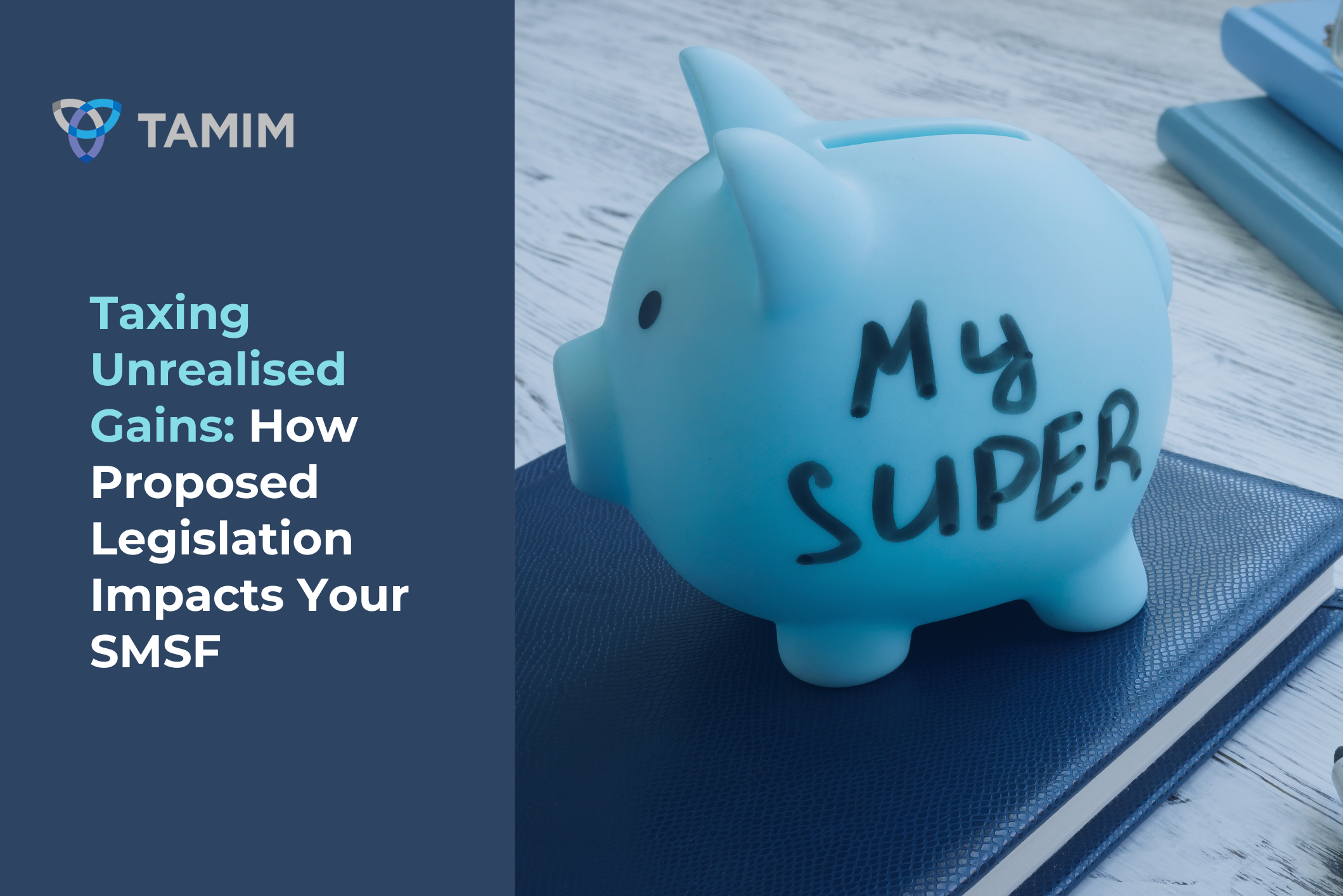
As the debate over this legislation intensifies, it is essential for SMSF trustees to stay informed and proactive. By understanding the key aspects of the bill and preparing for potential impacts, SMSF administrators can ensure continued compliance and optimise the performance of their funds. This article explores the major components of the proposed legislation and their implications for SMSFs, providing valuable insights for investors as they navigate the evolving superannuation landscape.
Division 296: A Game-Changer for SMSFs?
A major element of the proposed legislation is the Division 296 tax, which introduces a tax on unrealised capital gains for individuals with superannuation balances exceeding $3 million. For SMSFs, which often manage a diverse range of assets directly, this represents a significant change in the tax landscape. Historically, SMSFs have been favoured for their flexibility in asset allocation, whether in property, equities, or other investments. The introduction of a tax on unrealised gains adds a new layer of complexity for trustees to navigate.
This proposed tax has generated significant discussion across the industry, as it marks a departure from the traditional approach of taxing capital gains only when assets are sold. While this shift presents challenges, it also offers an opportunity for SMSF trustees to reassess their strategies, ensuring their funds are well-structured to meet future obligations. Trustees will need to evaluate whether their investment approaches remain suitable in light of the new tax regime and consider strategies to mitigate potential tax liabilities.
Why Are SMSFs Affected?
The proposed changes impact SMSFs because of their ability to directly invest in various asset classes, including property and shares, which can experience significant fluctuations in value. Under the new tax regime, trustees may face tax liabilities on assets that have appreciated in value, even if these assets haven’t been sold or converted to cash. Essentially, trustees could find themselves paying tax on “paper gains”—the increase in an asset’s value that has not been realised through an actual sale.
The SMSF Association has been vocal about the challenges posed by taxing unrealised gains. Peter Burgess, the Association’s CEO, has called on members to oppose the bill, citing concerns about unintended consequences. According to Burgess, the new tax could disproportionately impact small businesses, family enterprises, and primary producers who rely on SMSF assets for their retirement security. The legislation may force some trustees to sell assets prematurely to cover tax obligations, potentially undermining long-term investment strategies and diminishing retirement savings.
The $3 Million Threshold: Who’s Affected?
A key aspect of the proposed legislation is the tax on superannuation balances exceeding $3 million. This threshold has been a focal point of criticism, particularly regarding its lack of indexation. Over time, as inflation and asset values rise, more SMSFs are likely to find themselves subject to the new tax, even if the actual wealth of members has not significantly increased in real terms.
The government’s intention behind the $3 million threshold is to ensure that superannuation funds are used primarily for retirement savings, rather than becoming wealth accumulation vehicles for Australia’s wealthiest individuals. However, the reality is that many SMSFs, especially those holding substantial property or equity portfolios, could easily surpass this threshold. With property prices and equity markets continuing to climb, an increasing number of Australians nearing retirement may be affected.
For SMSF administrators, this development underscores the importance of keeping clients informed about how future asset value growth could affect their tax liabilities. Trustees may need to revisit their asset allocation strategies and assess whether their current investment mix aligns with long-term retirement objectives, given the potential tax implications associated with crossing the $3 million threshold.
Taxing Unrealised Gains: Why This Matters
The taxation of unrealised gains is perhaps the most contentious aspect of the proposed bill. Traditionally, capital gains tax (CGT) in Australia is applied only when an asset is sold, which allows the taxpayer to use the proceeds from the sale to cover the tax liability. The new legislation, however, would impose tax based on the increase in an asset’s value, regardless of whether it has been sold. This change could create significant cash flow issues for SMSFs holding illiquid assets, such as property, since the tax liability would arise without the corresponding liquidity to pay it.
The potential impact on SMSFs could be profound. Trustees may be forced to sell assets to meet their tax obligations, which could disrupt carefully planned investment strategies. Selling assets prematurely could also result in lower long-term returns, particularly if the market conditions at the time of sale are unfavourable. Additionally, trustees could face increased administrative complexity, as they would need to accurately calculate and report unrealised gains, a process that may not be straightforward for SMSFs that are not set up to differentiate between realised and unrealised gains in the same manner as larger, APRA-regulated superannuation funds.
The Administrative Burden on SMSF Trustees
For SMSF administrators, the proposed legislation introduces additional layers of complexity, requiring more sophisticated reporting and potentially higher compliance costs. Unlike large APRA-regulated funds, many SMSFs lack the systems in place to routinely track unrealised versus realised gains. This gap in capability could lead to increased administrative burdens for trustees who rely on external administrators or accountants to manage their funds.
Industry groups, including the SMSF Association, as well as independent politicians like Kylea Tink and Allegra Spender, have raised concerns that SMSFs may be unfairly penalised under the new regime. Despite having more transparent access to their financial data, SMSFs could face complex tax liabilities that make the administration of these funds more challenging and costly. The additional compliance requirements could discourage some individuals from using SMSFs altogether, potentially reducing the appeal of self-managed funds as a retirement savings vehicle.
The Senate’s Role: What Happens Next?
As the bill moves through the legislative process, the focus is shifting to the Senate, where the government’s confidence in securing the necessary votes will be tested. To pass the bill, the government will need the support of all 11 Greens senators and at least three other crossbenchers. This presents a critical moment for SMSF trustees and administrators to voice their concerns and advocate for significant amendments.
Opponents of the bill are calling on the Senate to consider the disproportionate impact these changes could have on small business owners, primary producers, and other constituents who may be affected by the new tax on unrealised gains. If the legislation passes without major revisions, many SMSF trustees will need to reassess their investment strategies, account for the tax implications of holding illiquid assets, and potentially face increased administrative burdens as they adapt to the new requirements.
The TAMIM Takeaway
The proposed changes to superannuation tax law present significant considerations for SMSFs, particularly regarding the taxation of unrealised capital gains and the $3 million threshold. While the legislation aims to better target superannuation concessions, it could inadvertently impose substantial burdens on SMSF trustees, forcing them to rethink their investment strategies and compliance processes.
Now is an opportune time for SMSF trustees to review their investment portfolios and understand the potential implications of the proposed changes. It is advisable to consult with an accountant to evaluate asset valuations and explore options for optimising the structure of the SMSF before 30 June 2025. By taking these proactive steps, trustees can ensure their funds remain compliant, resilient, and well-prepared to navigate any future legislative shifts.
by Amy | Oct 17, 2024 | Weekly list
This week’s TAMIM Reading List offers a captivating blend of history, finance, and culture. Discover the secrets to winning a Nobel Prize, alongside surprising reactions from laureates after their big moment. We explore whether investment giants like Vanguard and BlackRock wield too much influence, and dive into McDonald’s international culinary experiments with items like macarons. Journey through the coal-powered age of invention and learn about the strange world of “ant geopolitics.” We also examine a mysterious $7 billion donation to the U.S. and trace the cultural history of cocaine from medical marvel to illicit drug. Each article provides insights into the forces shaping our world.
📚 How to win a Nobel prize
📚 ‘You mean I have to stop my experiment?’ Not all Nobel laureates react the way you might expect
📚 Do Vanguard, Blackrock, and State Street Run the World?
📚 McDonald’s Macarons
📚 Age of Invention: The Coal Conquest
📚 Ant geopolitics
📚 Who died and left the US $7 billion?
📚 An undulating thrill: Once lauded as a wonder of the age, cocaine soon became the object of profound anxieties. What happened?
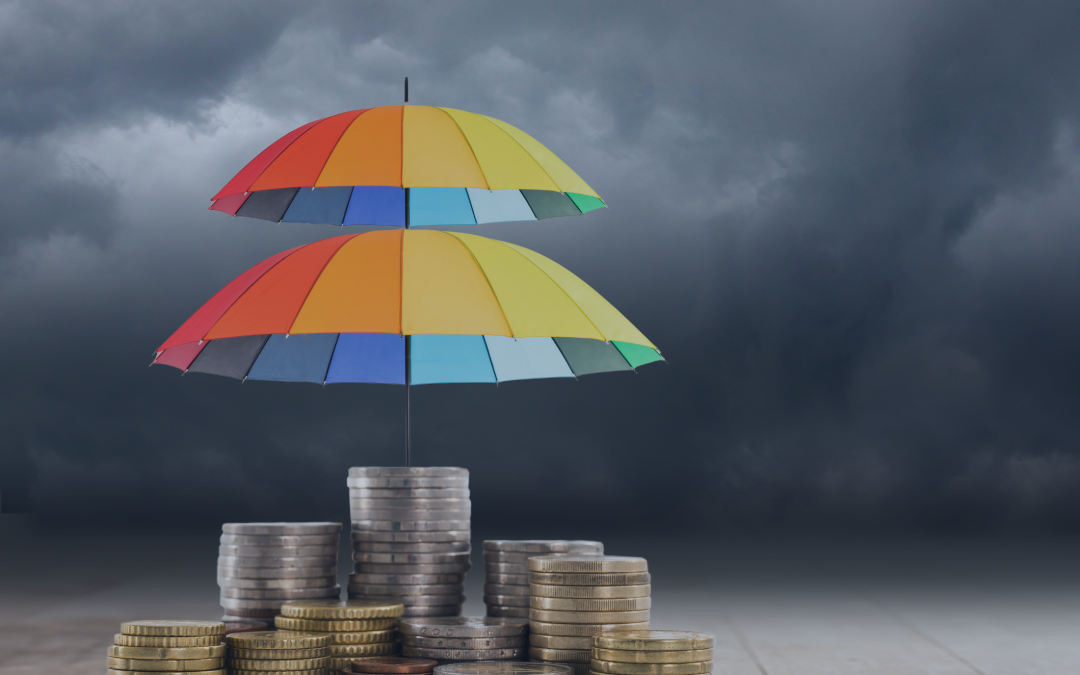
by Amy | Oct 10, 2024 | Market Insight
The margin of safety is one of the most important principles in value investing. Popularised by Benjamin Graham, the father of value investing and mentor to Warren Buffett, it refers to the buffer or cushion between the intrinsic value of an asset and its market price. This concept is based on the simple premise that no one can predict the future with certainty. Therefore, when investing, one should account for the possibility of error or unforeseen circumstances.
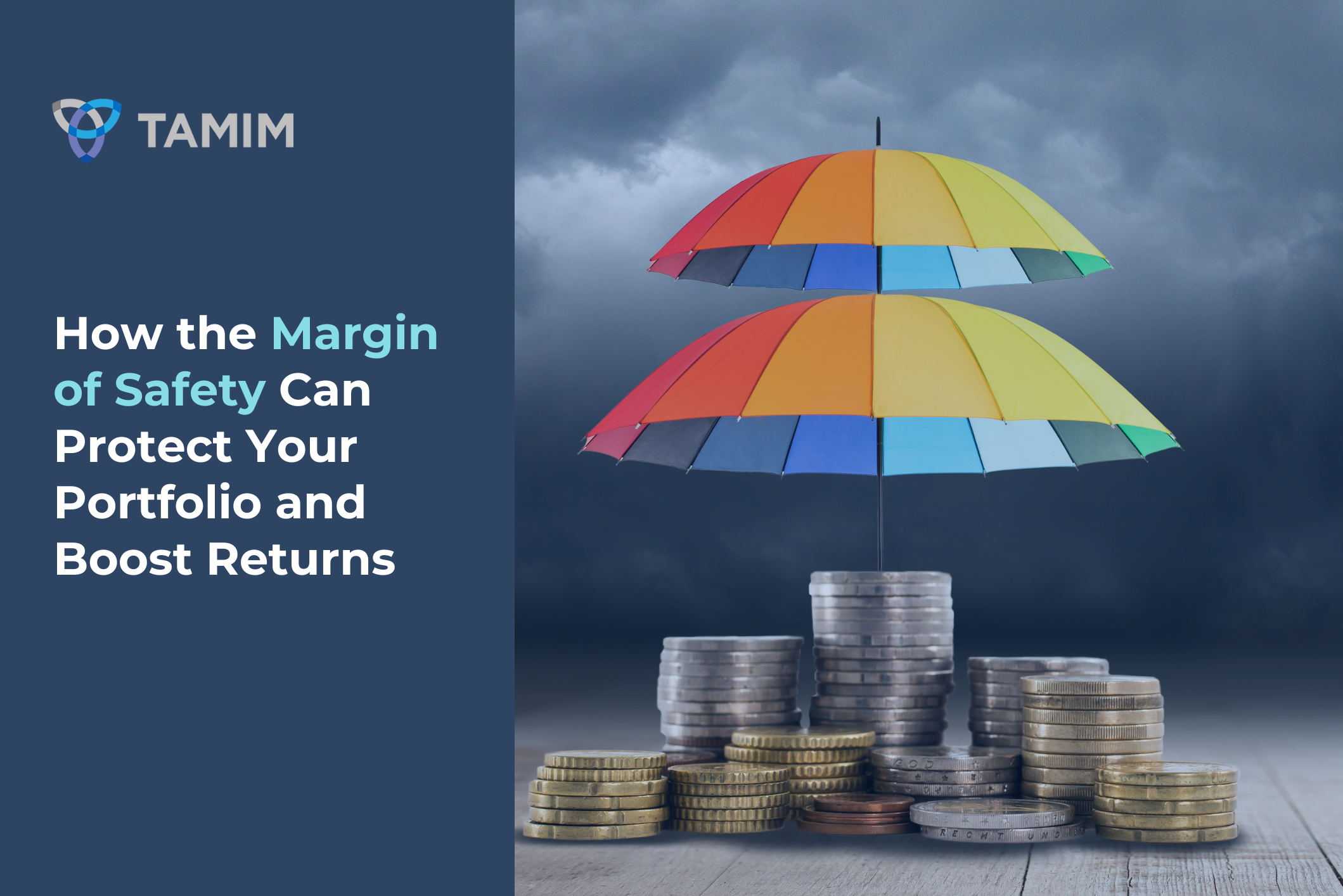
In practical terms, a margin of safety is created when you buy a stock for less than its calculated intrinsic value. The greater the margin between the price you pay and the stock’s true worth, the less risk you bear as an investor. If the market turns against you or if there was a miscalculation in determining the intrinsic value, the margin of safety helps protect your investment. This approach contrasts with speculation, where investors bet on price movements with minimal regard to the underlying value of the asset.
For everyday investors, the margin of safety provides a logical framework to manage risk and invest prudently. It shifts the focus from short-term gains to long-term preservation of capital, ensuring that your investments can withstand the inevitable ups and downs of the market.
Why the Margin of Safety Matters
Investing is inherently uncertain, and the stock market is volatile. As an everyday investor, it’s important to recognise that even the most seasoned experts can make errors in judgment. Market conditions fluctuate, economic indicators can change, and unexpected events—such as global recessions or technological disruptions—can heavily impact stock prices. The margin of safety matters because it offers a layer of protection against these uncertainties.
When you invest with a margin of safety, you are essentially giving yourself room to be wrong. If a stock’s intrinsic value is calculated to be $100, and you manage to buy it at $70, your margin of safety is $30. This margin acts as a buffer in case your calculations were slightly off or if market conditions suddenly shift. It increases the likelihood that even in the face of market downturns, your investment will retain value or recover over time.
The margin of safety isn’t just a concept for large institutional investors—it is incredibly valuable for everyday investors who may not have the time or resources to constantly monitor the markets. By ensuring a buffer between the price paid and the intrinsic value, the margin of safety protects against the natural unpredictability of markets, allowing investors to make decisions with greater confidence.
How to Build a Margin of Safety in Your Portfolio
Implementing the margin of safety principle in your own portfolio doesn’t require advanced financial models or deep market knowledge. By focusing on a few practical strategies, everyday investors can benefit from this time-tested approach to minimising risk and maximising returns.
1. Buy Below Intrinsic Value
The core of the margin of safety approach is buying assets at a discount to their intrinsic value. But how do you determine that value? For individual stocks, tools like price-to-earnings (P/E) ratios, discounted cash flow (DCF) analysis, and historical performance data can help estimate a company’s intrinsic worth.
For example, a stock trading at a P/E ratio significantly below the industry average could indicate a potential opportunity. However, these calculations should always be conservative, leaving room for possible errors. A disciplined approach would involve targeting stocks with a 20% to 30% discount to their calculated intrinsic value to provide a sufficient margin of safety.
2. Diversify Your Investments
Diversification is another powerful way to build a margin of safety into your overall portfolio. By spreading your investments across different asset classes—stocks, bonds, real estate, or commodities—you reduce the impact of any one underperforming investment on your entire portfolio.
For example, if one sector of the market declines, a well-diversified portfolio may still perform well because other sectors or asset classes may rise. This spreads the risk and provides a cushion for your investments, which is especially important in volatile markets.
3. Focus on High-Quality Companies
Investing in high-quality companies with strong fundamentals is another practical way to ensure a margin of safety. These companies tend to have healthy balance sheets, consistent earnings, and a history of weathering market downturns.
By focusing on quality, you reduce the likelihood of investing in companies that are too risky or have poor long-term prospects. For example, blue-chip companies, which are leaders in their industries and have a strong track record of stable growth, often provide more reliable returns and offer a natural margin of safety compared to speculative stocks or startups.
4. Avoid Overpaying for Growth
While high-growth stocks can be tempting, especially when their prices are soaring, these stocks often come with little to no margin of safety. In many cases, investors overpay for future growth that may never materialise. This increases the risk that any misstep in the company’s execution could lead to significant losses.
Instead, focus on companies with solid, proven business models that are currently undervalued. By avoiding overpaying for potential growth, you ensure that your investments are backed by solid fundamentals, which creates a greater margin of safety in case market conditions change.
Common Mistakes to Avoid
While the margin of safety is a highly effective investment principle, there are several pitfalls that investors—especially everyday ones—should be aware of when applying it.
1. Overconfidence in Valuation Models
Valuing a company or stock can never be done with absolute precision. Many factors—such as future earnings, industry trends, and macroeconomic forces—are based on assumptions and estimates. It’s important to be conservative when calculating a stock’s intrinsic value, leaving enough room for error.
Everyday investors (and even the professionals) can sometimes overestimate their ability to predict future growth or economic shifts. To avoid this, always assume there could be unexpected setbacks and err on the side of caution when applying the margin of safety.
2. Ignoring Market Conditions
Even if a stock appears to be trading at a deep discount, broader market conditions can still impact its performance. For example, during a recession, even high-quality, undervalued stocks may take a significant hit. It’s important to balance the margin of safety principle with an awareness of the overall economic climate.
Investors should always consider whether external factors—such as rising interest rates, inflation, or geopolitical events—might have a negative impact on the companies or sectors in which they are investing.
3. Falling for “Too Cheap” Stocks
A common mistake is assuming that just because a stock is cheap, it offers a margin of safety. However, some stocks are priced low for good reasons, such as deteriorating business models, high debt levels, or poor management. It’s essential to distinguish between genuinely undervalued stocks and those that are simply priced low due to fundamental issues.
Before buying a stock at a low price, investors should thoroughly research the company’s financial health, competitive position, and long-term prospects.
The TAMIM Takeaway
The margin of safety is a crucial concept that allows everyday investors to invest wisely and reduce the risk of significant losses. By purchasing assets below their intrinsic value, diversifying your portfolio, focusing on high-quality companies, and avoiding the trap of overpaying for growth, you can build a resilient investment strategy that withstands market volatility.
At TAMIM, we believe that a disciplined approach to investing, based on solid fundamentals and the margin of safety principle, can help investors achieve long-term financial security. Implementing these strategies can provide everyday investors with the tools needed to protect their portfolios from market uncertainty while positioning themselves for future growth.
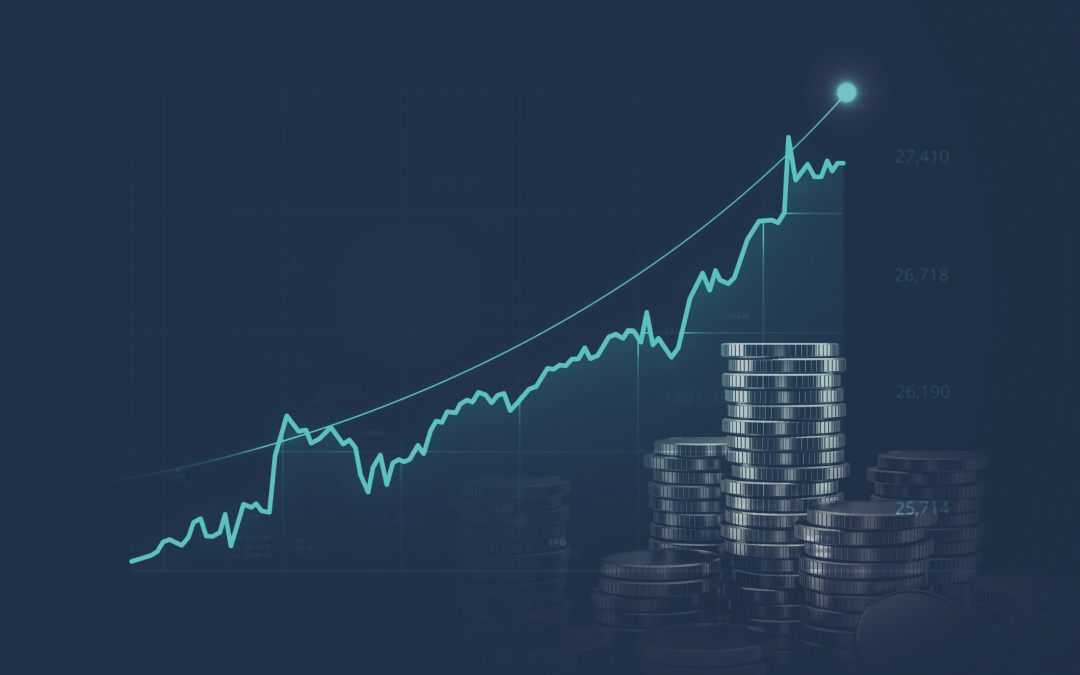
by Amy | Oct 10, 2024 | Stock Insight
We explore three companies across various industries that have demonstrated strong growth potential through their financial performance, market positioning, and strategic initiatives as they exited FY24. This blog highlights three companies—Humm Group, Praemium, and Australian Clinical Labs—that are well-positioned to achieve strong results in FY25.
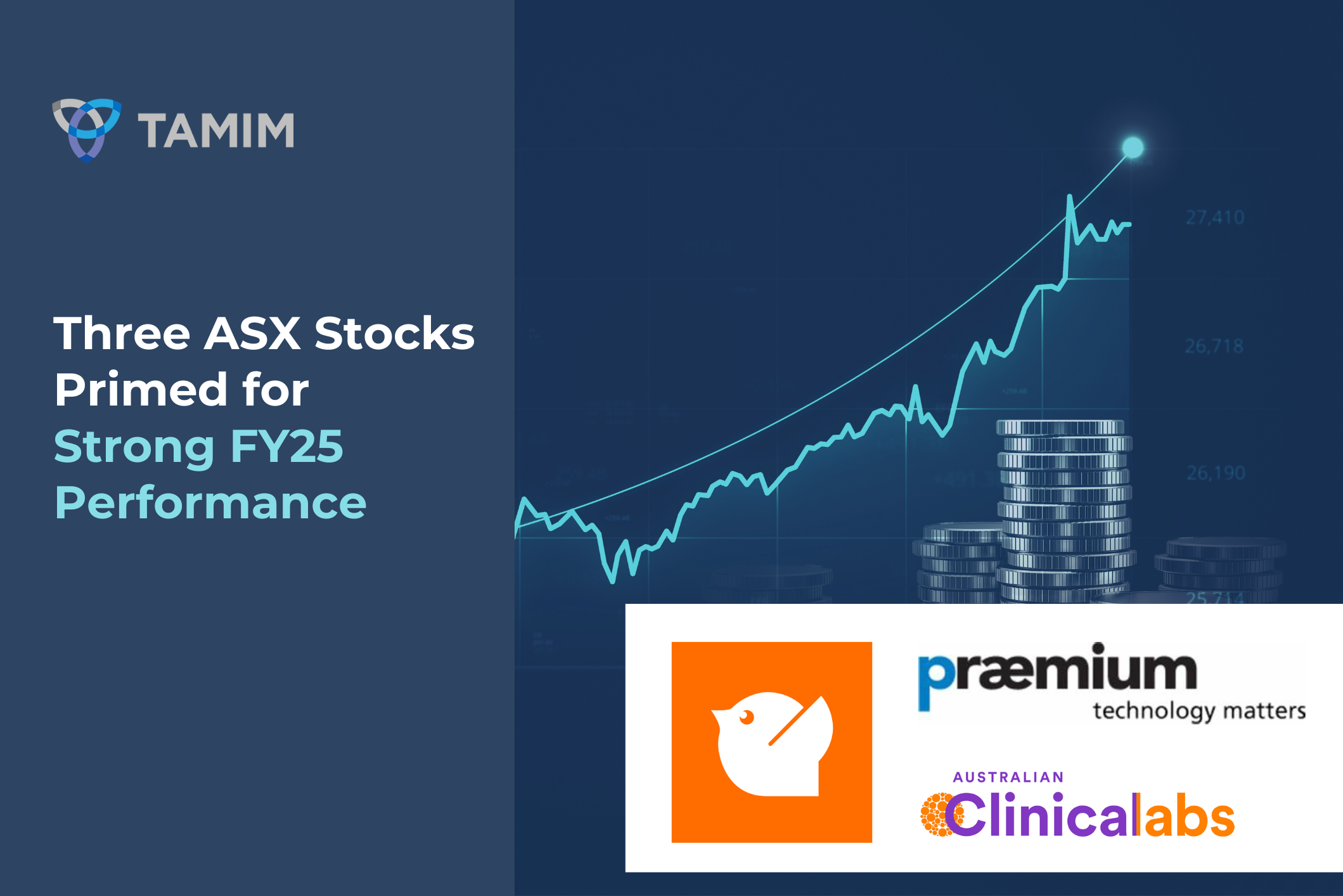
With each company operating in different sectors, from financial services to healthcare and fintech, their ability to innovate and adapt to shifting market conditions makes them particularly compelling. All three companies have strong net cash balance sheets and pay attractive dividends. We will take a deep dive into each company and offer insights into why these stocks deserve attention.
Humm Group Limited (ASX: HUM)
 Humm Group (ASX: HUM), a diversified financial services company, offers products ranging from buy-now-pay-later (BNPL) services to commercial leasing. Despite a challenging fiscal year, Humm reported a normalised cash profit of $60.6 million, reflecting a 19% decrease from the prior year. This drop was largely influenced by a weaker first half of the year, impacted by rising interest rates, economic uncertainty and increased competition in the BNPL sector.
Humm Group (ASX: HUM), a diversified financial services company, offers products ranging from buy-now-pay-later (BNPL) services to commercial leasing. Despite a challenging fiscal year, Humm reported a normalised cash profit of $60.6 million, reflecting a 19% decrease from the prior year. This drop was largely influenced by a weaker first half of the year, impacted by rising interest rates, economic uncertainty and increased competition in the BNPL sector.
However, there were several positive developments in the second half of the year, which signal well for Humm’s future prospects. The company experienced a 16% improvement in normalised cash profit compared to the first half. Additionally, net interest income grew by 5% in the second half, demonstrating a measure of stability amid rising interest rates. Humm’s net interest margin also held steady at 5.5%, showcasing the company’s ability to manage its margins even as the broader economic environment remained challenging.
Another key highlight for Humm was its ability to reduce operating expenses by 20%, achieving cost savings of $13.6 million in the second half compared to the first. This reduction in costs significantly improved the company’s cost-to-income ratio, which fell from 64% in the first half to 53% in the second half. The company’s ability to implement significant cost-saving measures underscores its commitment to operational efficiency and its focus on driving profitability despite market headwinds.
Humm’s consumer business also showed signs of improvement, with normalised cash profit after tax increasing from $6.5 million in the first half to $11.8 million in the second half. This turnaround was largely driven by the company’s efforts to rebuild and refocus its consumer division around customer needs and preferences. Humm is now concentrating on further improvements in its consumer business, with an eye on delivering sustainable, long-term growth.
Looking ahead, Humm remains focused on expanding its commercial portfolio, which has continued to demonstrate strong growth potential. The company is exploring opportunities to enter new regions and sectors, positioning itself for further expansion. A new funding program with Moelis Australia (MAF) for commercial receivables is also expected to increase the company’s capacity for capital-light growth, a key strategic priority moving forward.
At a current market cap of $400 million, Humm could potentially deliver a $70 million profit in FY25, with the possibility of a sector re-rating on the horizon, should the RBA opt for interest rate cuts early next year, the stock may experience significant upward momentum. Humm could present an intriguing opportunity for investors who are willing to look beyond its recent challenges and focus on its long-term growth potential.
Praemium Limited (ASX: PPS)
 Praemium Limited (ASX: PPS), a provider of investment platforms and portfolio administration services, has been making waves in the financial technology sector. The company delivered solid financial results for the year, with EBITDA reaching $21.5 million. This represents a notable improvement on market expectations, driven by a particularly strong second-half performance. EBITDA increased by 42%, rising from $9 million in the first half to $12.5 million in the second half. This uptick in profitability reflects Praemium’s ability to control expenses while capitalising on strong revenue growth.
Praemium Limited (ASX: PPS), a provider of investment platforms and portfolio administration services, has been making waves in the financial technology sector. The company delivered solid financial results for the year, with EBITDA reaching $21.5 million. This represents a notable improvement on market expectations, driven by a particularly strong second-half performance. EBITDA increased by 42%, rising from $9 million in the first half to $12.5 million in the second half. This uptick in profitability reflects Praemium’s ability to control expenses while capitalising on strong revenue growth.
In fact, Praemium’s revenue for the second half grew by 15%, reaching $84.9 million, an indication of the company’s robust market position and price increases. This growth was underpinned by Praemium’s investment in capability, resilience, and IT security during the first half, which laid the groundwork for its subsequent financial success. Praemium’s scalable business model has positioned it well within the industry, with $57.4 billion in assets under administration, reflecting the company’s broad reach and strong standing in the financial services space.
One of the key strategic moves that has contributed to Praemium’s growth was the acquisition of the OneView business from Iress (IRE), a decision that has proven to be both strategic and revenue boosting. The acquisition enhanced Praemium’s revenue and EBITDA, further solidifying its position as a key player in the sector. The company’s ability to integrate the new business seamlessly while maintaining strong financial discipline is a testament to its management team’s expertise.
Looking ahead, Praemium’s growth prospects appear strong. The company has identified a gap in the market for next-generation IDPs (Investment Data Platforms), which it is poised to address with its new offerings. This product innovation is expected to drive further revenue growth and expand Praemium’s customer base to address the non custodial market for high net worth investors. Additionally, the company has remained committed to disciplined capital management, evidenced by its 1-cent dividend declaration and its ongoing on-market share buyback program. Praemium’s net cash position of $44 million provides the company with ample financial flexibility to pursue further growth opportunities.
Praemium’s management team is optimistic about the company’s future, with our estimate projecting EBITDA of $28 million for FY25. With the company trading at an EBITDA multiple of 8.5x, it remains an attractive option for investors seeking exposure to the financial technology sector and dividend income. Praemium’s combination of strong revenue growth, operational efficiency, and product innovation makes it a compelling investment opportunity in a consolidating sector.
Australian Clinical Labs Limited (ASX: ACL)
 Australian Clinical Labs Limited (ASX: ACL), a leading provider of pathology services in Australia, reported solid financial results for the fiscal year. Despite a significant 59% decline in COVID-19-related revenue, ACL managed to deliver flat total revenue of $696.4 million, a testament to the company’s ability to maintain stability in its core business operations.
Australian Clinical Labs Limited (ASX: ACL), a leading provider of pathology services in Australia, reported solid financial results for the fiscal year. Despite a significant 59% decline in COVID-19-related revenue, ACL managed to deliver flat total revenue of $696.4 million, a testament to the company’s ability to maintain stability in its core business operations.
ACL’s underlying EBIT came in at $62.6 million, in line with the company’s FY24 guidance. However, the second half of the year was particularly strong for ACL, with underlying EBIT improving to $39.1 million, representing an 11% margin. This is a significant improvement compared to the first half, where underlying EBIT was $23.4 million, with a margin of 7%. The company’s ability to drive margin expansion in the second half of the year reflects the success of its cost control measures and its focus on operational efficiency.
ACL has carried this positive momentum into FY25, with strong growth already evident in the early months of the fiscal year. In July, ACL reported revenue per working day growth of 7.6%, alongside volume growth of 5.9%. The company’s FY25 EBIT guidance of $65-$72 million suggests that ACL is well-positioned to continue delivering strong financial performance in the coming year.
The clinical sector, in which ACL operates, has benefitted from improving general practitioner attendance volumes and a focus on cost controls, which has enhanced profitability across the board. Furthermore, recent mergers and acquisitions in the radiology sector have bolstered investor sentiment to healthcare stocks. For example, IDX’s acquisition of CAJ at 10x EBITDA and HLS’s sale of Lumus at 15x EBITDA have highlighted the value within the sector. In contrast, ACL is currently trading at a single-digit EBITDA multiple, making it a relatively undervalued player in the healthcare space.
ACL also benefits from a strong balance sheet, with a healthy cash position that provides the company with the financial flexibility to pursue growth opportunities and return capital to shareholders. The company’s dividend yield remains attractive, offering investors a steady income stream alongside the potential for capital appreciation.
One recent development that has positively impacted ACL’s stock performance is the exit of Crescent, the company’s largest shareholder, which sold its 30% holding. This move has removed a significant stock overhang and improved liquidity, making ACL more accessible to a broader range of institutional investors. Additionally, the company is now well-positioned for potential inclusion in market indices, which could further enhance its stock’s visibility and attractiveness.
Looking ahead, ACL appears poised for a re-rating, particularly if it continues to deliver strong financial results in FY25 where we estimate it is highly likely to upgrade guidance at the AGM or first half result. The company’s competitive positioning, strong balance sheet, and improving market conditions make it an appealing option for investors seeking exposure to the healthcare sector.
The TAMIM Takeaway
As we evaluate these three companies the common theme that emerges is resilience and the potential for strong future performance. Humm Group, despite facing a difficult year, has shown signs of recovery and has positioned itself for future growth through cost-saving initiatives and a focus on its commercial portfolio. Praemium’s scalable business model, strong revenue growth, and product innovation make it a compelling option in the financial technology sector. Australian Clinical Labs, with its solid start to FY25, improving margins, and undervalued stock, presents an attractive investment opportunity in the healthcare sector.
At TAMIM Asset Management, we focus on identifying opportunities like these, where the fundamentals suggest significant upside potential. Each of these stocks represents a unique opportunity to capitalise on sector trends and company-specific growth drivers. As we move forward into the next financial year, these companies are worth keeping an eye on, as they may offer considerable returns for investors with a long-term perspective.
_______________________________________________________________________________________________________
Disclaimer: Humm Group (ASX: HUM), Praemium Limited (ASX: PPS) and Australian Clinical Labs Limited (ASX:ACL) are held in TAMIM Portfolios as at date of article publication. Holdings can change substantially at any given time.


 Emcor Group (NYSE: EME), a leading provider of electrical and mechanical construction services in the United States, plays a crucial role in designing, building, and maintaining essential energy systems for urban centres and industrial facilities. The company’s services span HVAC, electrical systems, and power generation, which are crucial for supporting cities and industries, including the AI-driven data centres that require modern power infrastructure to operate efficiently.
Emcor Group (NYSE: EME), a leading provider of electrical and mechanical construction services in the United States, plays a crucial role in designing, building, and maintaining essential energy systems for urban centres and industrial facilities. The company’s services span HVAC, electrical systems, and power generation, which are crucial for supporting cities and industries, including the AI-driven data centres that require modern power infrastructure to operate efficiently.
 Hitachi Ltd. (TYO: 6501), a Japanese multinational conglomerate, plays a pivotal role in the global shift toward sustainable energy and digital transformation. The company’s expertise extends across power grids, nuclear energy, and advanced industrial systems, which positions it well to support the modernisation of energy infrastructure worldwide. Hitachi’s broad involvement in energy projects ranges from renewable energy solutions to digital tools that optimise energy management, making it a key contributor to the evolving energy landscape.
Hitachi Ltd. (TYO: 6501), a Japanese multinational conglomerate, plays a pivotal role in the global shift toward sustainable energy and digital transformation. The company’s expertise extends across power grids, nuclear energy, and advanced industrial systems, which positions it well to support the modernisation of energy infrastructure worldwide. Hitachi’s broad involvement in energy projects ranges from renewable energy solutions to digital tools that optimise energy management, making it a key contributor to the evolving energy landscape.






 Humm Group (ASX: HUM), a diversified financial services company, offers products ranging from buy-now-pay-later (BNPL) services to commercial leasing. Despite a challenging fiscal year, Humm reported a normalised cash profit of $60.6 million, reflecting a 19% decrease from the prior year. This drop was largely influenced by a weaker first half of the year, impacted by rising interest rates, economic uncertainty and increased competition in the BNPL sector.
Humm Group (ASX: HUM), a diversified financial services company, offers products ranging from buy-now-pay-later (BNPL) services to commercial leasing. Despite a challenging fiscal year, Humm reported a normalised cash profit of $60.6 million, reflecting a 19% decrease from the prior year. This drop was largely influenced by a weaker first half of the year, impacted by rising interest rates, economic uncertainty and increased competition in the BNPL sector. Praemium Limited (ASX: PPS), a provider of investment platforms and portfolio administration services, has been making waves in the financial technology sector. The company delivered solid financial results for the year, with EBITDA reaching $21.5 million. This represents a notable improvement on market expectations, driven by a particularly strong second-half performance. EBITDA increased by 42%, rising from $9 million in the first half to $12.5 million in the second half. This uptick in profitability reflects Praemium’s ability to control expenses while capitalising on strong revenue growth.
Praemium Limited (ASX: PPS), a provider of investment platforms and portfolio administration services, has been making waves in the financial technology sector. The company delivered solid financial results for the year, with EBITDA reaching $21.5 million. This represents a notable improvement on market expectations, driven by a particularly strong second-half performance. EBITDA increased by 42%, rising from $9 million in the first half to $12.5 million in the second half. This uptick in profitability reflects Praemium’s ability to control expenses while capitalising on strong revenue growth. Australian Clinical Labs Limited (ASX: ACL), a leading provider of pathology services in Australia, reported solid financial results for the fiscal year. Despite a significant 59% decline in COVID-19-related revenue, ACL managed to deliver flat total revenue of $696.4 million, a testament to the company’s ability to maintain stability in its core business operations.
Australian Clinical Labs Limited (ASX: ACL), a leading provider of pathology services in Australia, reported solid financial results for the fiscal year. Despite a significant 59% decline in COVID-19-related revenue, ACL managed to deliver flat total revenue of $696.4 million, a testament to the company’s ability to maintain stability in its core business operations.